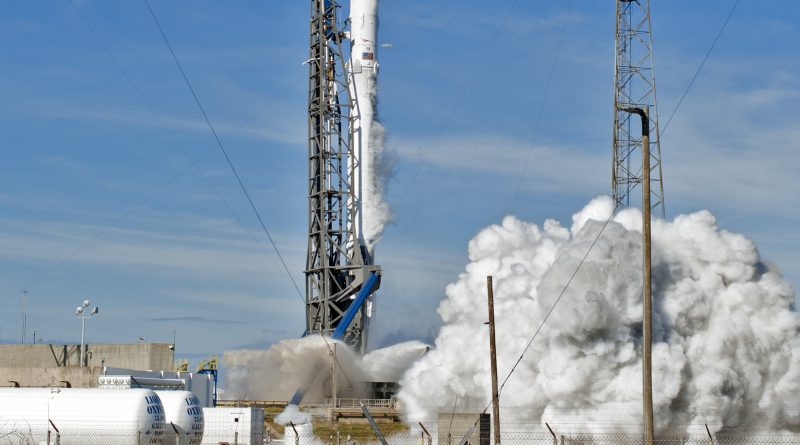Falcon 9 Completes Static Fire Test Ahead of Monday Liftoff on Next ISS Resupply Mission
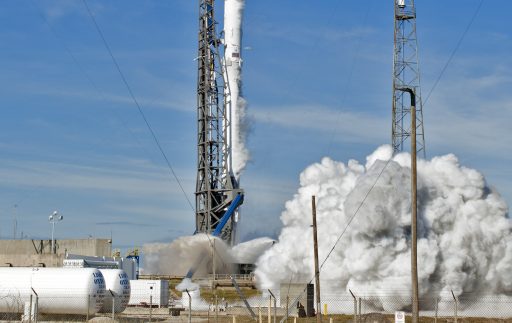
A previously used Falcon 9 booster came to life at Florida’s Space Coast on Wednesday in preparation for the launch of the first U.S. Space Station resupply mission of the year, set for a Monday afternoon liftoff ahead of a two-day chase of the orbiting laboratory by the flight-proven Dragon spacecraft.
SpaceX’s fourteenth operational ISS supply run is ferrying 2,647 Kilograms of cargo to the Station, including dozens of experiments, hardware & supplies, an innovative satellite exploring space debris removal technology, and three external payloads comprising two new research facilities and a spare pump for the Station’s cooling system.
Stepping up the pace again after a three-week gap in launches, SpaceX performed a Static Fire test on the West Coast on Sunday in preparation for the company’s fifth flight in support of the Iridium-NEXT constellation, now targeting launch on Friday after a spacecraft-related delay. Dragon SpX-14 – the second mission involving a used booster and ‘flight-proven’ spacecraft – is targeting launch on Monday at 20:30 UTC, 4:30 p.m. local time and will be inbound for a robotic capture on Wednesday to kick off a planned stay of around three weeks, sending the ISS crew into a sprint to unload the spacecraft and complete a number of experiments it carries.
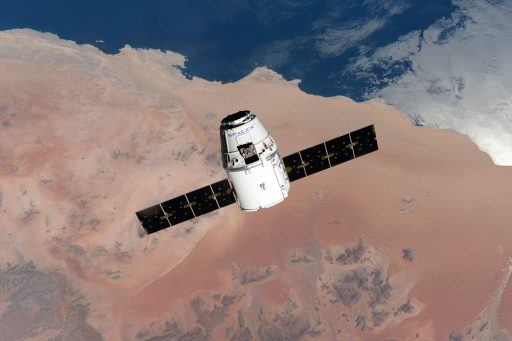
This latest Commercial Resupply Services mission will again involve previously used hardware after NASA green-lit the use of flight-proven Dragon spacecraft and Falcon 9 first stages last year. SpX-14 will employ Booster 1039 that first flew in August of 2017 on the Dragon SpX-12 mission and performed a smooth return to Cape Canaveral for refurbishment and re-launch; the Dragon C110 spacecraft spent 33 days off the planet in 2016 when supporting the Dragon SpX-8 mission that delivered over three metric tons to ISS including the expandable BEAM module.
Refurbished and fitted with a new Trunk Section, the Dragon is now tasked with lifting 1,721 Kilograms of cargo in its pressurized section while the three trunk payloads weigh in at 926 Kilograms and will be removed robotically to take their positions on the exterior of the International Space Station. As is typical for Dragon flights, SpX-14 is heavy on the utilization side – delivering 1,071 kg of science/utilization hardware and “only” 344 kg of crew supplies, 148 kg of vehicle hardware and 99 kg of spacewalk gear.
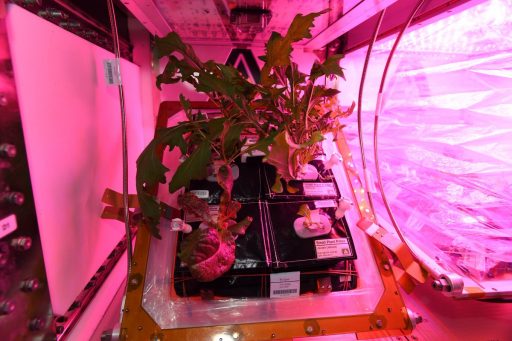
While Dragon handles the delivery of primarily utilization-related cargo, Orbital ATK Cygnus missions are used for the bulk of crew supplies and maintenance hardware heading to the U.S. Segment of ISS. This division of labor across the two CRS-1 contractors arises from Dragon’s ability to return cargo from ISS – allowing experiments to launch on Dragon, be completed by the ISS crew and then ride back to Earth aboard the same spacecraft to undergo post-flight analysis. To that end, Dragon typically hosts a number of laboratory freezers carrying samples to and from the Station and the crew has their hands full with cargo and experiment operations while Dragon is docked.
Among the pressurized cargo of the SpX-14 mission is new hardware for the Station’s Veggie facility designed to increase harvests of lettuce and other plants grown on ISS through an improved water and nutrient delivery system. Other studies riding up on Dragon look into the fundamental mechanics of sintering as a process to create hardened materials, a new variable G centrifuge will boost the Station’s capacity for commercial biology and biochemistry studies and a wound healing investigation will look into a new type of wound dressing that could reliably prevent sepsis and act as scaffolding for tissue regeneration – a potential game-changer for combat medicine and future space travel to distant targets.
>>Dragon SpX-14 Cargo Overview
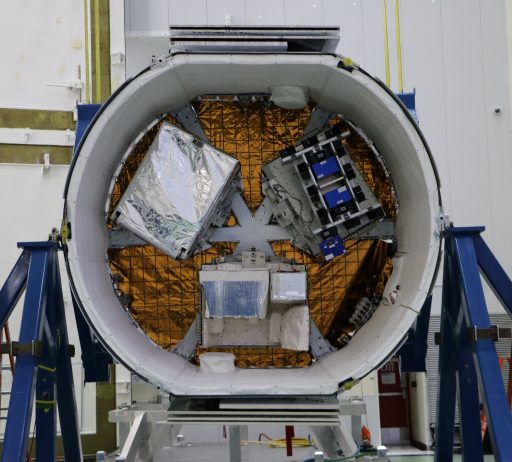
Bolted into the Trunk Section of the Dragon is ASIM – the Atmosphere-Space Interactions Monitor taking up residence outside the Columbus Module, the MISSE Flight Facility offering a new materials science and exposure platform for space-exposure studies, and a spare Pump Flow Control Subassembly for the Space Station’s photovoltaic cooling system.
ASIM is an ESA-sponsored instrument developed by the Danish National Space Center to study the chemical and physical processes occurring where Earth’s dense atmosphere and the charged particle environment of near-Earth space interact.
The 314-Kilogram package hosts a series of UV/VIS/IR imaging cameras, high-speed radiometers covering the same wavelengths and an X- and Gamma-Ray monitor to capture the signature of energetic phenomena like blue jets, elves and red sprites occurring over terrestrial thunderstorms. These Transient Luminous Events, although known since the late 80s, have only been observed sporadically and ASIM hopes to learn about the interaction of the atmosphere and space by capturing detailed spectral records of these events from the orbital vantage point of ISS.
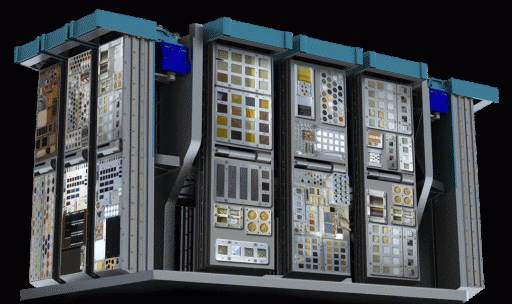
MISSE-FF, a product of AlphaSpace, is a commercial exposure facility that takes the original concept of NASA’s Materials on ISS Experiment (MISSE) as a basis and adds a number of new capabilities like the ability of hosting powered payloads that actively collect data to go beyond the scope of variable-duration exposure studies. Two MISSE-FF units are headed to ISS this year, each offering 14 slots for exchangeable sample modules that can be exposed to the space environment between six months and three years to gather data on how different samples fare in the challenging space environment to inform the designers of future spacecraft.
The third trunk payload, unlike its two companions, is a potentially critical spare part for the Space Station’s future – a Pump Flow Control Subassembly that builds the central part of the Photovoltaic Thermal Control System tasked with radiating heat from the power-generation equipment on ISS into space by flowing ammonia through thermal regulation loops. Although ISS currently has eight functioning power channels, the PFCS has been a known failure point in the past and so Station managers decided to pre-stage a pristine spare outside ISS in addition to one previously used but still functional PFCS and one spare that has been sitting idle since 2000.
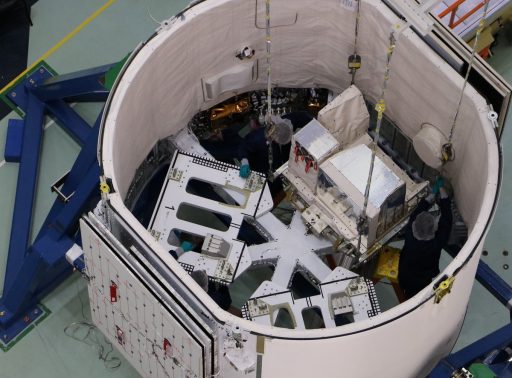
Preparations for the Dragon SpX-14 mission have been smooth: its launch date has been sticking since the beginning of the year and processing on the spacecraft and launcher side has been uneventful. Gearing up for the mission, SpaceX rolled the two-stage Falcon 9 – still missing its payload – to the launch pad at Space Launch Complex 40 by Wednesday morning in advance of a multi-hour test window for the Static Fire Test.
The brief ignition of Falcon’s nine Merlin 1D engines was preceded by a full tanking sequence involving both stages of the launch vehicle to put all systems through a pressure and thermal cycle including a full tank pressurization in the tail end of the automated countdown sequence. Ignition occurred around 17:30 UTC and Falcon 9 was expected to fire for seven seconds – the typical duration of a Static Fire for a used booster.
For new boosters, SpaceX deems a 3.5-second fire duration sufficient to collect performance data on the start-up of the nine Merlin Engines after each booster already underwent a full-duration acceptance test in the weeks leading up to launch. Flight-proven boosters do not complete another McGregor test firing and are evaluated via extending the Static Fire to collect steady-state performance data with the engines at operational thrust levels.
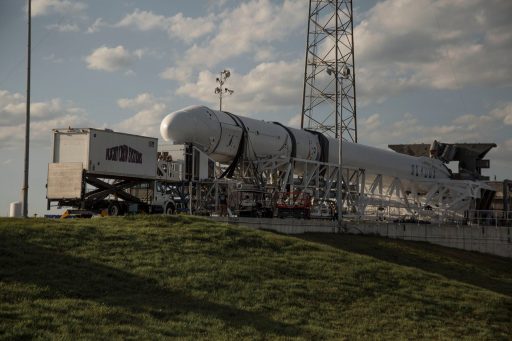
SpaceX confirmed the successful completion of the Static Fire on Twitter, indicating the burn met its planned duration and all desired performance parameters needed for in-depth reviews were obtained. Next, the Falcon 9 will return to its pad-side hangar where it will meet its payload over the coming days before returning to the Launch Pad on Sunday for late cargo loading on the Dragon – involving time-critical science payload headed to ISS.
Taking its vertical launch position by Monday morning, Falcon 9 will be counting down to an instantaneous launch opportunity at 20:30 UTC. SpX-14 is the first of three planned Dragon missions of 2018, to be joined by two Cygnus and one HTV flight – resupplying the U.S. Segment and its four crew members to support a packed science program with 80 to 100 crew hours of science activities completed per week across a wide swath of scientific disciplines.

